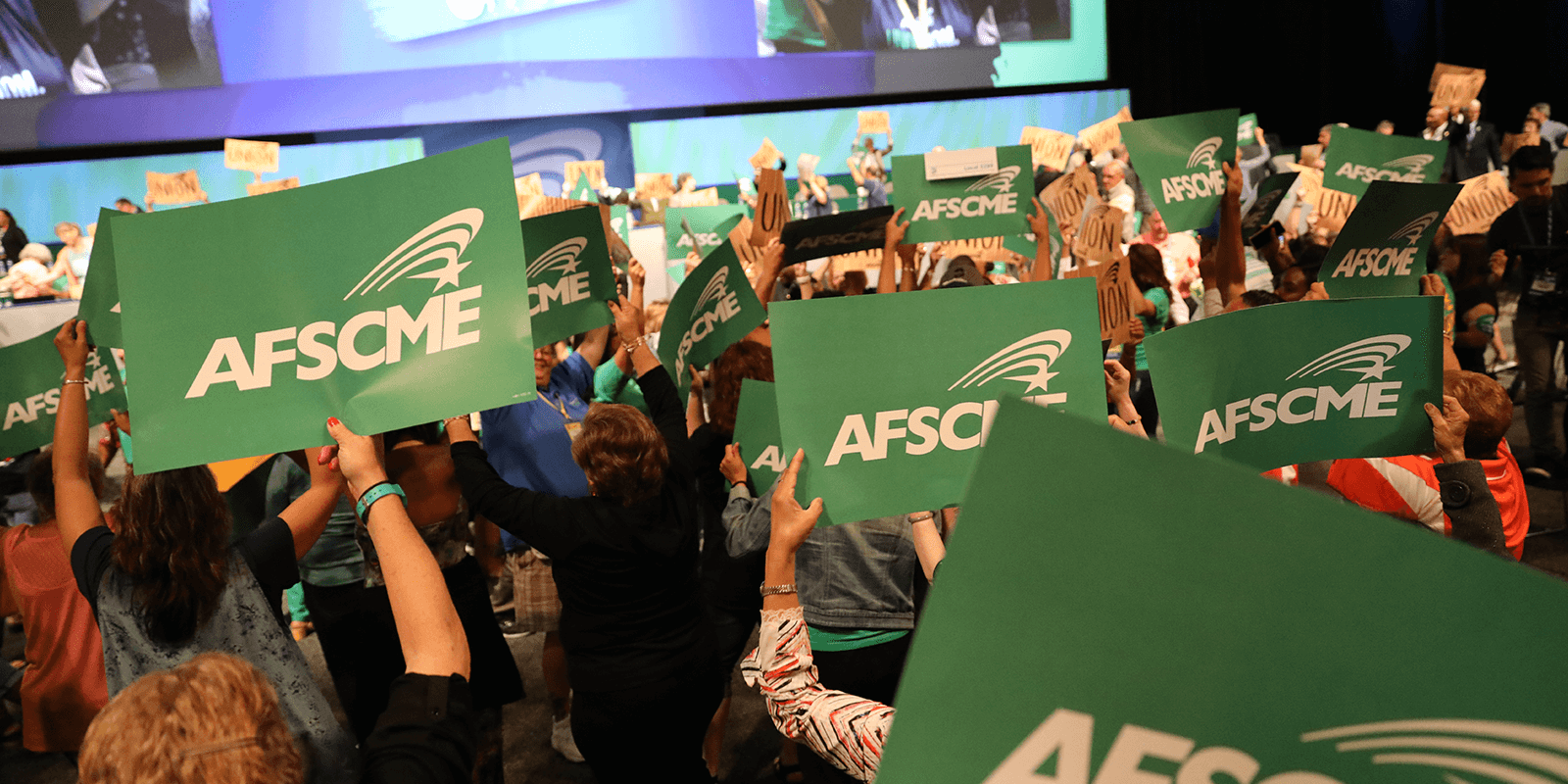Earlier this month, the U.S. Bureau of Labor Statistics reported that the percentage of workers who are members of a union ticked down just slightly last year – by .2 percentage points, with membership among local government employees actually increasing. This is an enormous victory for the labor movement, when you consider how 2018 began.
A year ago, billionaire-funded corporate special interests and their allies on the political right were licking their chops, boastfully predicting the demise of unions. They had put their muscle behind a Supreme Court case called Janus v. AFSCME Council 31, a frontal attack on the freedom of working people to build power in numbers together. This was the culmination of a decades-long, scorched-earth, Koch-financed effort to kneecap unions, especially those like AFSCME that represent people who work in public service.
The court, as expected, ruled against us in Janus last summer, overturning more than four decades of precedent to make the entire public sector so-called right to work. Many pundits had pre-drafted our obituary, with our adversaries preparing to dance on our grave. But then a funny thing happened: the anticipated mass hemorrhaging of AFSCME members never materialized.
It turns out our opponents wildly underestimated the loyalty and resolve of AFSCME members, their desire to stick with their union. We had spent the last several years cultivating that loyalty through an aggressive campaign of member-to-member engagement and one-on-one conversations – what we call internal organizing. By meeting people where they are and treating them as individuals (not just part of a collective), we were able to make a powerful connection, to build even greater trust, to convey the value that the union adds.
When the same corporate groups that brought the Janus case launched multimillion-dollar propaganda blitzes designed to persuade AFSCME members to walk away from their union, they were overwhelmingly greeted with slammed doors. These drop or “opt out” campaigns failed badly, with seven new people signing up to join the union for every one choosing to leave.
AFSCME members resisted the lies because they had heard the truth: that belonging to a union means a voice on the job, a better life for their families and greater vitality for their communities. The data just released by BLS confirms that – workers belonging to unions enjoyed 2018 median earnings 22 percent higher than their non-union peers.
As it turned out, the ferocious anti-union attacks were an overreach, igniting a powerful backlash and a fresh wave of activism. Workers are organizing and mobilizing with renewed dynamism: fast food employees hitting the streets to demand $15 an hour and a union; educators walking off the job, both for better pay for themselves and stronger schools for the children they serve. And according to Gallup, unions enjoy more public support (62 percent) than at any time since 2003.
All this energy has created a political tailwind – and therefore a mandate for a governing agenda, at the state and federal levels, that lifts up unions and all working people. A new pro-worker majority assumed control of the U.S. House of Representatives this month; longtime antagonists like former governors Scott Walker in Wisconsin and Bruce Rauner in Illinois (the original plaintiff in Janus v. AFSCME) were swept out of office in the midterm elections.
Challenges remain for AFSCME and the entire labor movement, to be sure. But the trials of the last year have emboldened rather than demoralized us. We stared down an existential threat in 2018 – and not only survived, but emerged with greater strength and unity.
